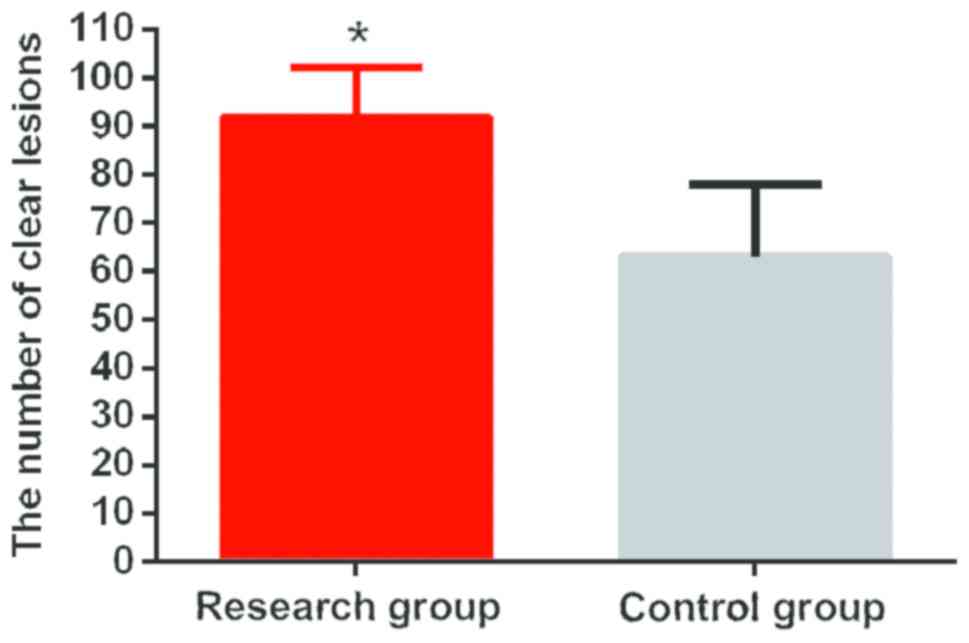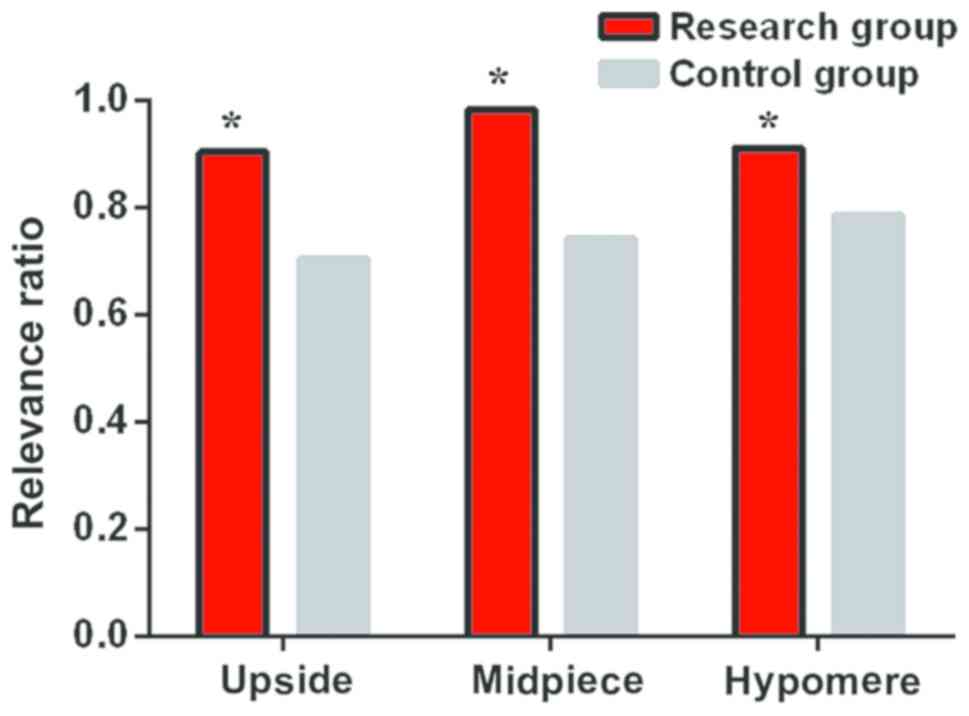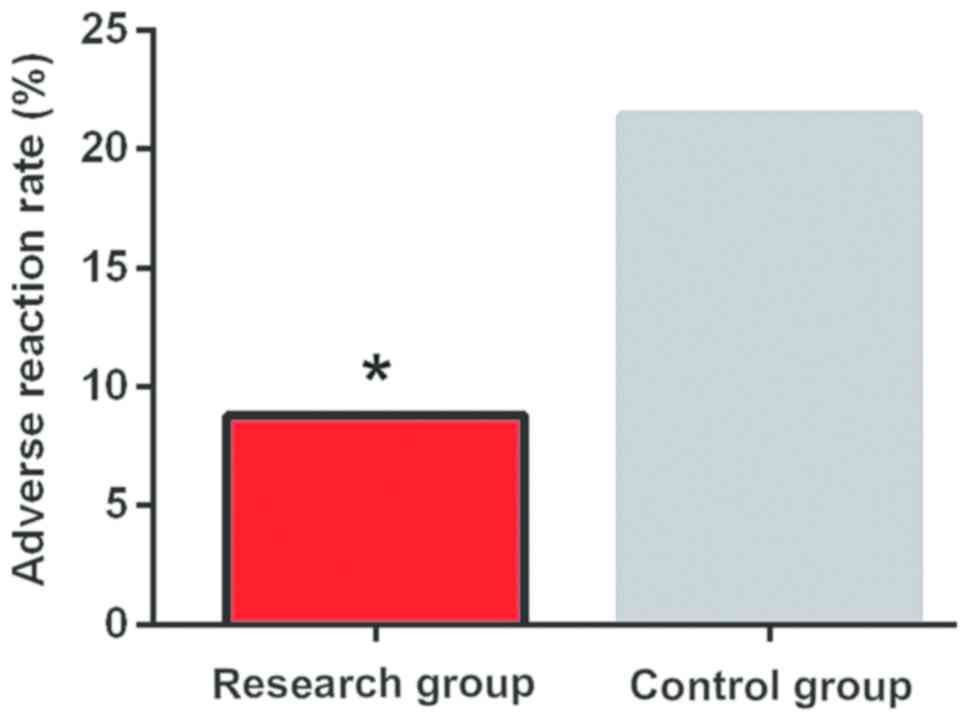|
1
|
Jain S and Dhingra S: Pathology of
esophageal cancer and Barrett's esophagus. Ann Cardiothorac Surg.
6:99–109. 2017. View Article : Google Scholar : PubMed/NCBI
|
|
2
|
Ginex P, Thom B, Jingeleski M, Vincent A,
Plourde G, Rizk N, Rusch VW and Bains M: Patterns of symptoms
following surgery for esophageal cancer. Oncol Nurs Forum.
40:E101–E107. 2013. View Article : Google Scholar : PubMed/NCBI
|
|
3
|
Otterstatter MC, Brierley JD, De P,
Ellison LF, Macintyre M, Marrett LD, Semenciw R and Weir HK:
Esophageal cancer in Canada: Trends according to morphology and
anatomical location. Can J Gastroenterol. 26:723–727. 2012.
View Article : Google Scholar : PubMed/NCBI
|
|
4
|
Spallone A and Izzo C: Esophageal cancer
presenting as a brain metastasis: A case report. Oncol Lett.
6:722–724. 2013. View Article : Google Scholar : PubMed/NCBI
|
|
5
|
Wu SX and Wang LH: Current status and
perspectives of radiotherapy for esophageal cancer. Zhonghua Zhong
Liu Za Zhi. 38:650–654. 2016.(In Chinese). PubMed/NCBI
|
|
6
|
Huang FL and Yu SJ: Esophageal cancer:
Risk factors, genetic association, and treatment. Asian J Surg.
41:210–215. 2018. View Article : Google Scholar : PubMed/NCBI
|
|
7
|
Wang WP, Yang YS, He SL and Chen LQ:
Discussion of N staging category of the eighth edition of The AJCC
Esophageal Cancer Staging System. Zhonghua Wai Ke Za Zhi.
55:894–897. 2017.(In Chinese). PubMed/NCBI
|
|
8
|
Becker V, Bobardt J, Ott R, Rösch T and
Meining A: Long-term follow-up in patients with indeterminate
Barrett esophagus. Digestion. 88:161–164. 2013. View Article : Google Scholar : PubMed/NCBI
|
|
9
|
Shah AK, Saunders NA, Barbour AP and Hill
MM: Early diagnostic biomarkers for esophageal adenocarcinoma - the
current state of play. Cancer Epidemiol Biomarkers Prev.
22:1185–1209. 2013. View Article : Google Scholar : PubMed/NCBI
|
|
10
|
Machida H, Sano Y, Hamamoto Y, Muto M,
Kozu T, Tajiri H and Yoshida S: Narrow-band imaging in the
diagnosis of colorectal mucosal lesions: A pilot study. Endoscopy.
36:1094–1098. 2004. View Article : Google Scholar : PubMed/NCBI
|
|
11
|
Ladabaum U, Fioritto A, Mitani A, Desai M,
Kim JP, Rex DK, Imperiale T and Gunaratnam N: Real-time optical
biopsy of colon polyps with narrow band imaging in community
practice does not yet meet key thresholds for clinical decisions.
Gastroenterology. 144:81–91. 2013. View Article : Google Scholar : PubMed/NCBI
|
|
12
|
Chen G, Wang B, Li H, Ma X, Shi T and
Zhang X: Applying narrow-band imaging in complement with
white-light imaging cystoscopy in the detection of urothelial
carcinoma of the bladder. Urol Oncol. 31:475–479. 2013. View Article : Google Scholar : PubMed/NCBI
|
|
13
|
Swangsri J, Nakajima Y, Kawada K, Tokairin
Y, Suzuki T, Miyawaki Y, Hoshino A, Okada T, Ota S, Ryotokuji T, et
al: Changes in the microvascular structure of mucosal squamous cell
carcinoma of the esophagus and their significance in tumor
progression. J Med Dent Sci. 60:83–91. 2014.PubMed/NCBI
|
|
14
|
Dawsey SM, Fleischer DE, Wang GQ, Zhou B,
Kidwell JA, Lu N, Lewin KJ, Roth MJ, Tio TL and Taylor PR: Mucosal
iodine staining improves endoscopic visualization of squamous
dysplasia and squamous cell carcinoma of the esophagus in Linxian,
China. Cancer. 83:220–231. 1998. View Article : Google Scholar : PubMed/NCBI
|
|
15
|
Moreno Racionero F, de Andres Asenjo B,
Bedate Nuñez M, Legido Moran P, Ortega Loubon C, Rabadán Jimenez J
and Beltran de Heredía Y Rentería J: Unusual relationship between
skin lesions and esophageal cancer: A case report and review of
literature. Z Gastroenterol. 53:115–119. 2015. View Article : Google Scholar : PubMed/NCBI
|
|
16
|
Cho JW, Choi SC, Jang JY, Shin SK, Choi
KD, Lee JH, Kim SG, Sung JK, Jeon SW, Choi IJ, et al Korean ESD
Study Group, : Lymph node metastases in esophageal carcinoma: An
endoscopist's view. Clin Endosc. 47:523–529. 2014. View Article : Google Scholar : PubMed/NCBI
|
|
17
|
Yu X and Wang G: Endoscopic treatment of
early esophageal cancer. Zhonghua Wei Chang Wai Ke Za Zhi.
18:860–863. 2015.(In Chinese). PubMed/NCBI
|
|
18
|
Chadwick G, Groene O, Hoare J, Hardwick
RH, Riley S, Crosby TD, Hanna GB and Cromwell DA: A
population-based, retrospective, cohort study of esophageal cancer
missed at endoscopy. Endoscopy. 46:553–560. 2014. View Article : Google Scholar : PubMed/NCBI
|
|
19
|
Shibahara T, Yamamoto N, Yakushiji T,
Nomura T, Sekine R, Muramatsu K and Ohata H: Narrow-band imaging
system with magnifying endoscopy for early oral cancer. Bull Tokyo
Dent Coll. 55:87–94. 2014. View Article : Google Scholar : PubMed/NCBI
|
|
20
|
Muto M: Endoscopic diagnostic strategy of
superficial esophageal squamous cell carcinoma. Dig Endosc. 25
(Suppl 1):1–6. 2013. View Article : Google Scholar : PubMed/NCBI
|
|
21
|
Gono K, Obi T, Yamaguchi M, Ohyama N,
Machida H, Sano Y, Yoshida S, Hamamoto Y and Endo T: Appearance of
enhanced tissue features in narrow-band endoscopic imaging. J
Biomed Opt. 9:568–577. 2004. View Article : Google Scholar : PubMed/NCBI
|
|
22
|
Ide E, Carneiro FO, Frazão MS, Chaves DM,
Sallum RA, de Moura EG, Sakai P, Cecconello I and Maluf-Filho F:
Endoscopic detection of early esophageal squamous cell carcinoma in
patients with achalasia: Narrow-band imaging versus Lugol's
staining. J Oncol. 2013:7367562013. View Article : Google Scholar : PubMed/NCBI
|
|
23
|
Matuszczyk A, Hahn S, Böse D, Eggebrecht
H, Schmermund A, Quadbeck B, Wieneke H, Petersenn S, Janssen OE and
Mann K: Gadolinium as an alternative contrast agent during cardiac
catheterization in patient with iodine-induced hyperthyroidism. Exp
Clin Endocrinol Diabetes. 114:336–338. 2006. View Article : Google Scholar : PubMed/NCBI
|

















